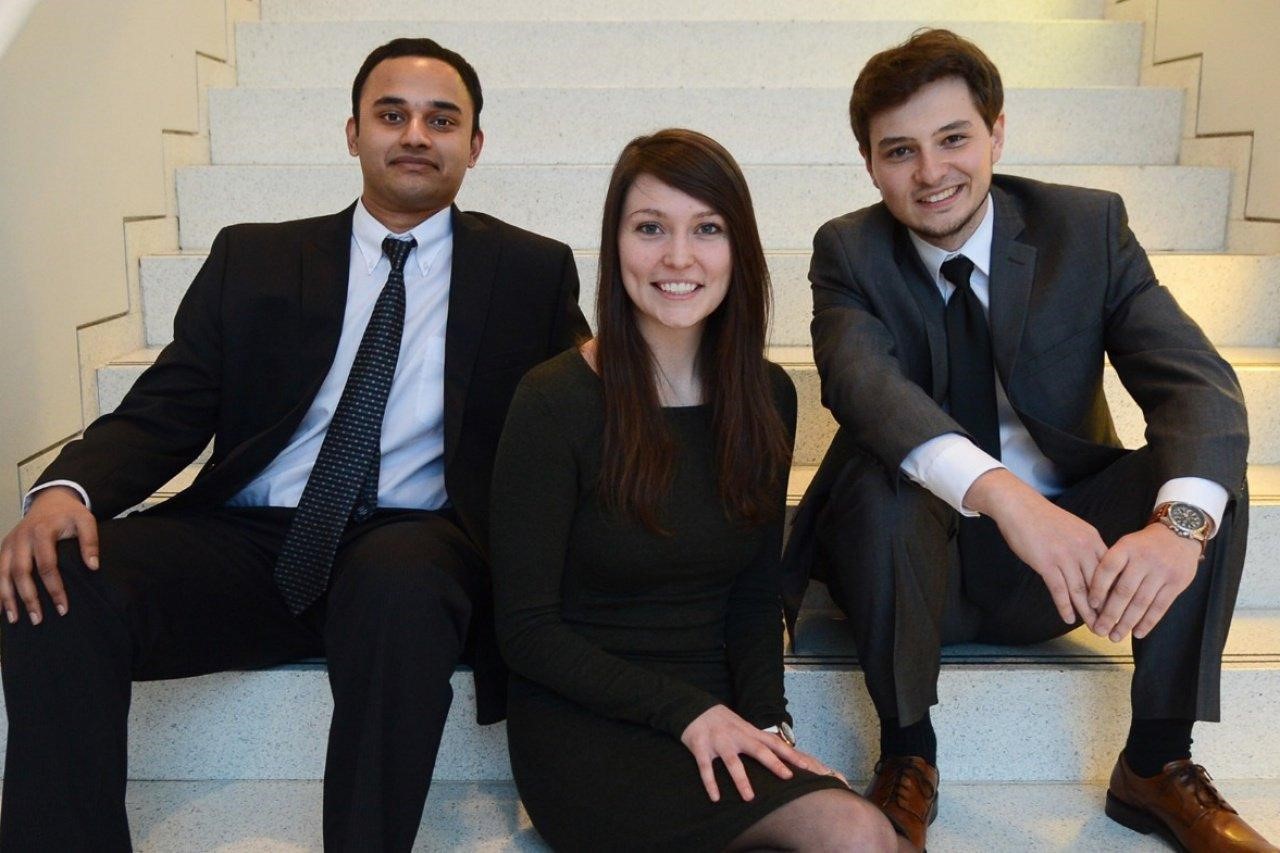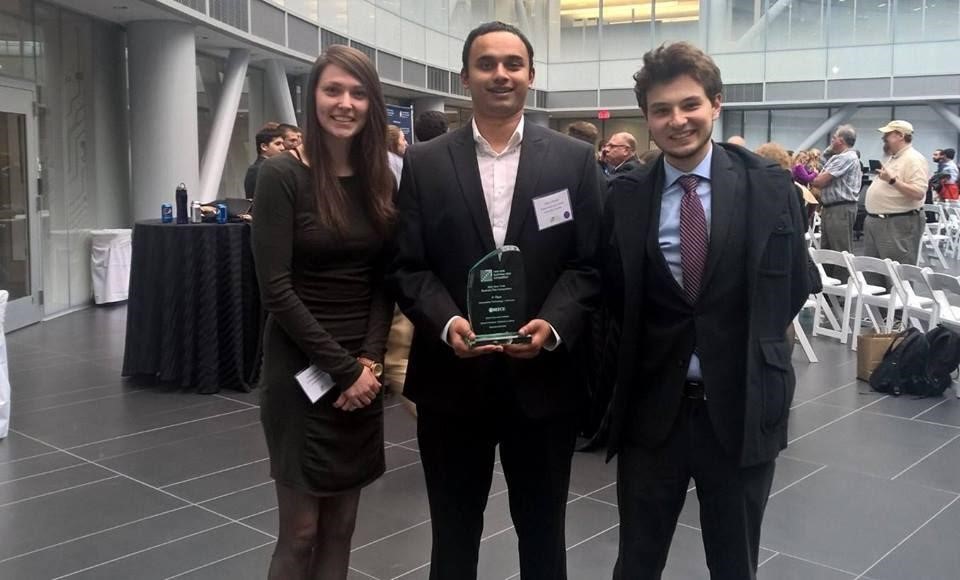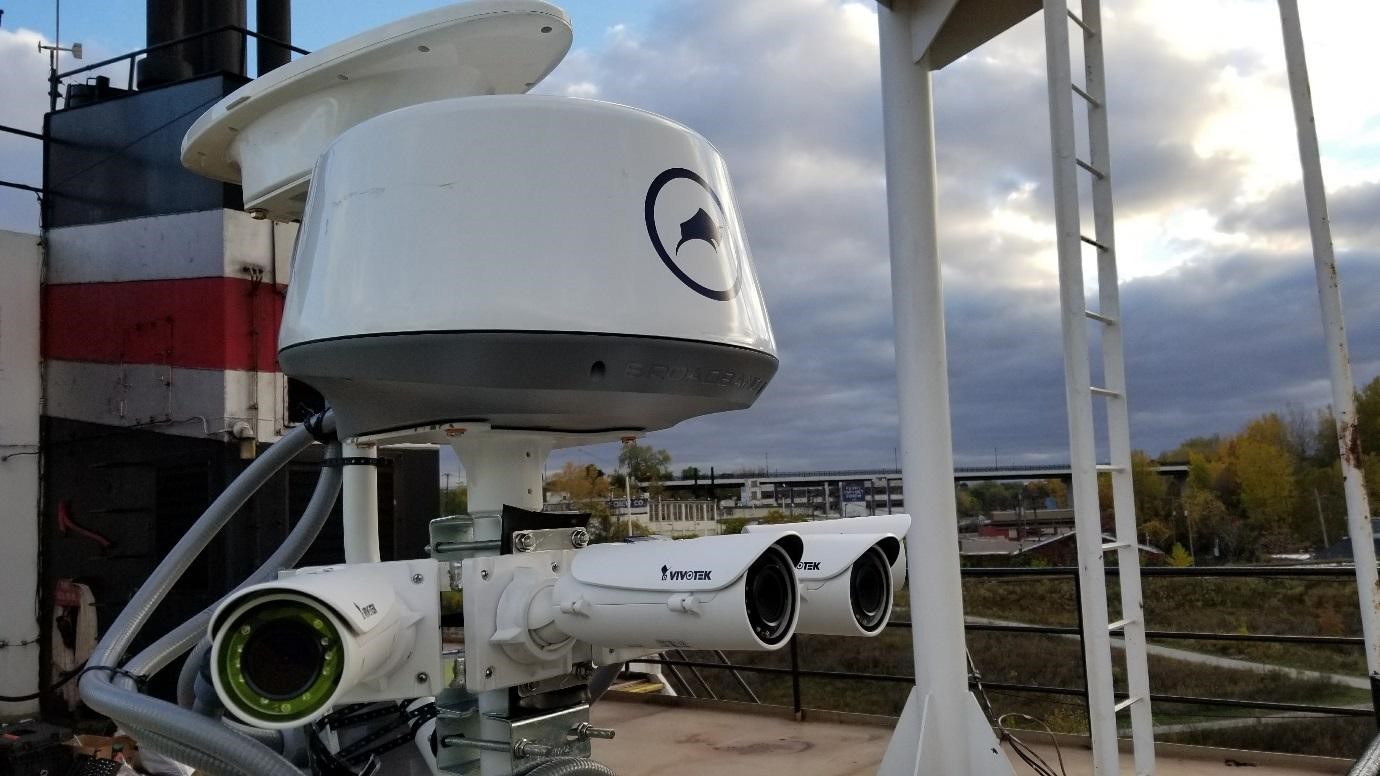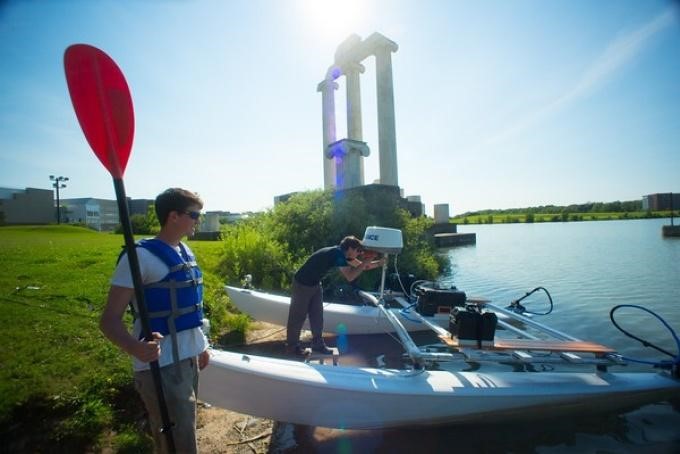While everyone is focused on driverless cars, perhaps the first sector to usher in autonomous travel might be the marine sector. Buffalo Automation, a New York based AI start-up, has developed a system called AutoMate that can help a boat self-navigate.

The founding team Thiru Vikram (left), Emilie Reynolds (center), and Alex Zhitelzeyf (right)
The Journey
What started off as a research project at the University at Buffalo, quickly evolved into a commercial venture as the team discovered the market potential for their product. Their affiliation with the University at Buffalo has been very critical to their success. Their product was created with guidance and help from the University at Buffalo. The founding team consists of Thiru Vikram, the current CEO, Alex Zhitelzeyf, and Emilie Reynolds, all of whom have studied at the University at Buffalo.
The company was founded in 2015 and has been steadily progressing and gaining prominence. In 2015, they won $7500 at the Buffalo Student Sandbox, a two-month accelerator. The following year, they won UB’s prestigious Henry A. Panasci Jr. Technology Entrepreneurship Competition, and also received $25,000 investment from Launch NY and Z80 Labs. Buffalo Automation recently concluded their $900,000 seed funding round in April 2018. The round was led by the Jacobs Family with participation from Z80 Labs other investors.

The team after a win
On AutoMate
Their product, AutoMate, is essentially a predictive AI based self-navigation system that helps a boat operate autonomously. This is conceptually similar to the systems of driverless cars. It enables autonomous travel between two points while circumventing obstacles.
Apart from preloaded maps to identify pre-existing stationary objects, the system consists of onboard sensory devices and cameras that capture the surroundings. It uses radar, LIDAR and thermal cameras that enable the system to detect obstacles up to 24 nautical miles out and get a 360-degree view of its surroundings. The neural networks help the system process information from these sources and understand its surroundings. Algorithms that are trained using machine learning help adjust the boat’s movement through rough waters based on similar experiences while also learning from the captain. The manoeuvres that are made are in compliance with international navigation rules such as COLREGS that are in place to ensure smooth passage of marine traffic.

Up-close image of the camera installed on a vessel
The novelty of the system is its predictive nature, predicting conditions before they arise and making necessary changes. It is not reactive like the autopilot mechanisms that react to the environment. The system picks up on weather data and other indicators to help predict future scenarios and adjust the boat speed. For example, while testing at Great Lakes, the team found that the canal is very narrow and only one ship can pass through. This means the other boats must wait, spending time and fuel in the process. The system could factor in such events and automatically adjust the boat’s speed to optimize the travel.
The Seascape
With a global merchant fleet size of over 93,000 vessels with gross tonnage of over 100 gt, the market is significantly large. In an era of globalized supply chains and with over 90% of the world trade being carried out by ships, it is essential that this network operate smoothly and efficiently. The shipping industry moved over 10.6 billion tons in 2016.
Vessels are expensive and capital-intensive assets that must be taken care of. Accidents are a major problem with additional costs being incurred and no revenue being generated by the vessel. The most expensive salvaging and repair incident was that of Costa Concordia which ended up costing the owners over $2 billion. With vessel sizes increasing, these costs will only go up should the vessel be involved in an unfortunate mishap. According to an AGCS report, “human error accounts for approximately 75% of the value of almost 15,000 marine liability insurance claims analyzed over five years, equivalent to over $1.6bn.”
Apart from the physical damage to ship, there are serious issues such as loss of life, injury, environmental pollution, and loss of cargo. To get an estimation of the severity of the problem, the European Maritime Safety Agency reported 3145 casualties and incidents involving 3505 ships in 2016.
The potential impact of this technology is incredible. There are a wide range of applications spanning from small individual recreational boats and yachts to large commercial and defence vessels. The potential impact includes greater efficiency, travel optimization, and increased safety. This could result in huge savings for its clients.

Testing during the initial phase
The company faces competition from domestic as well as international players. Given that these systems require little to no change before being deployed into another geographic area, the threat from international competition is real and significant. Its competitors range from start-ups to huge multinational corporations and defence research agencies. Buffalo Automation is focusing on the commercial and recreational segments right now, which is a good strategy. Their system can be retrofit onto existing vessels. Buffalo Automation is currently working with three large shipping companies and has installed their system on several large freighters.
The advantage Buffalo Automation has is its affiliation with the University at Buffalo and the resources that are available in terms of skilled human capital and networks, among other things. However, other competitors also have strategic tie ups or past experience in the industry. For example, KONGSBERG, a Norwegian company that is developing a similar product is doing so in collaboration with the Norwegian Defence Research establishment (FFI). Sea Machines, a Boston based competitor, has a team with previous experience in the marine sector. Large companies such as Maersk, that would have been potential clients, have their own in-house projects. There are organized consortiums of sorts such as One Sea that are paving the way to bring in an autonomous maritime ecosystem by 2025. While Buffalo Automation has a powerful product with strong technical backing, its ability to penetrate the market will be crucial to its success. It is still in its early phase and has a long way to go.
Subscribe to our newsletter



